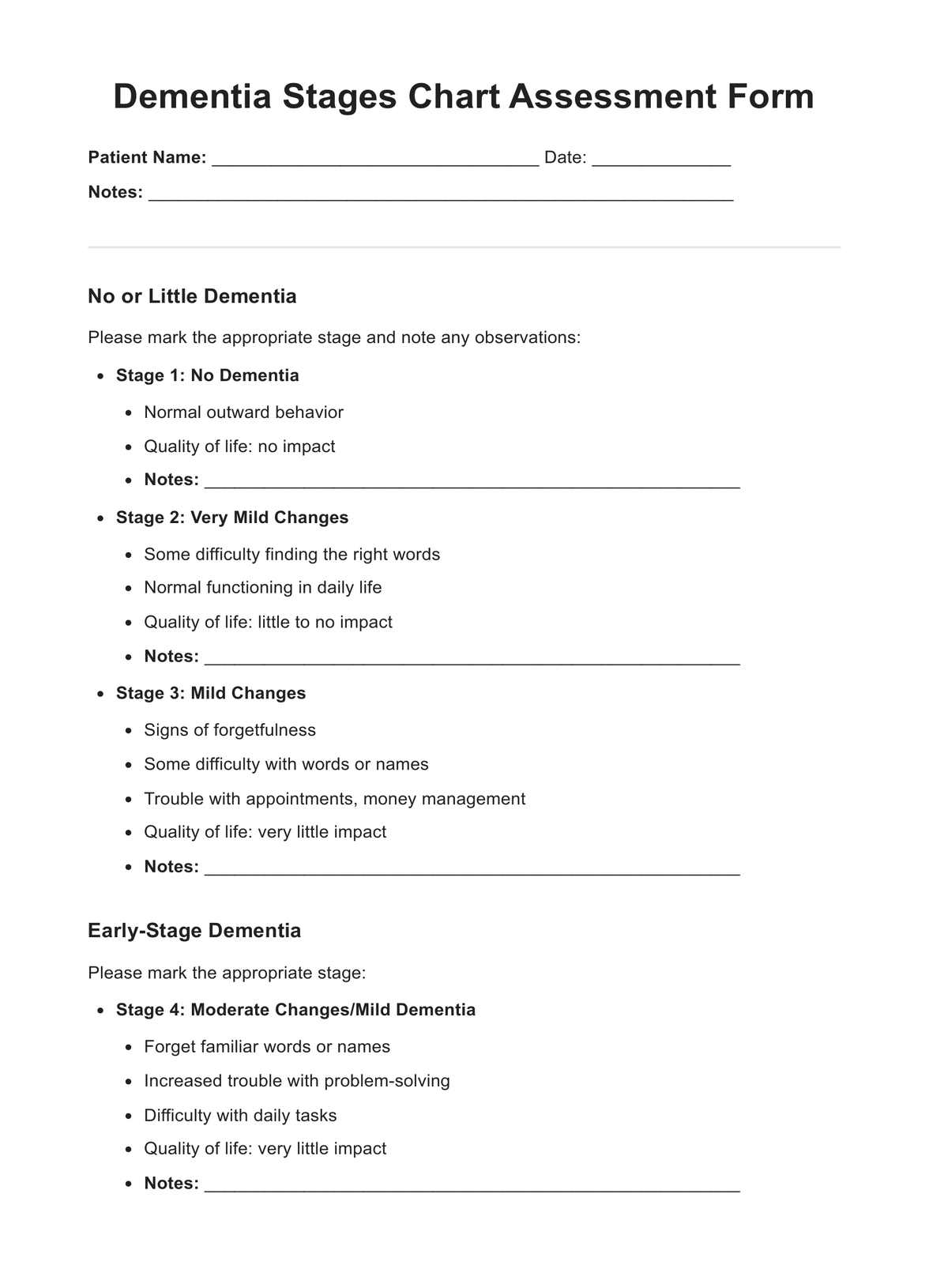Medical professionals, caregivers, and family members can use the Dementia Stages Charts.

Dementia Stages Chart
Explore the Dementia Stages Chart with our template. Tailor care plans, enhance communication, and understand symptoms.
Use Template
Dementia Stages Chart Template
Commonly asked questions
You can use this chart when caring for someone diagnosed with dementia or displaying symptoms.
The Dementia Stages Charts are used for tracking the progression of dementia, planning care, and communicating between healthcare providers.
EHR and practice management software
Get started for free
*No credit card required
Free
$0/usd
Unlimited clients
Telehealth
1GB of storage
Client portal text
Automated billing and online payments











